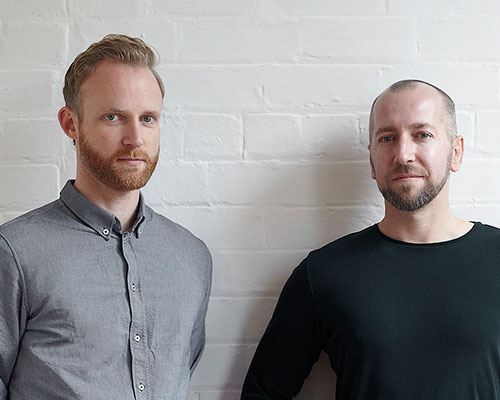self-titled creative directors jake smallman and paul monkivitch
photograph by paul wesolek
self-titled is a creative agency based in melbourne, australia – started in 2014 by creative directors paul monkivitch and jake smallman. the studio works across various media creating bold identities and campaigns for brands in cultural and commercial sectors.
designboom: what made you want to become designers and how did you come to start working together?
jake smallman: I originally wanted to be an architect or artist. after finishing school I spent a year doing a foundation and folio course in the arts and graphic design seemed to cover a lot of the aspects of the course I enjoyed.
paul monkivitch: truly discovered graphic design whilst studying fine art training and painting. once I was ‘introduced’ I was hooked.
JS: we both spent time working in london studios before heading back to melbourne where we worked together at a studio called cornwell design for a number of years. it was a great place to work, probably more creative than strategic, but still with a focus on brand. I then went to paper stone scissors which was more focussed on art direction for fashion and lifestyle brands. in 2010 I took on a role as creative director at interbrand in melbourne, which provided a more strategic approach to branding and involved exposure to large national clients.
PM: after spending several years as design director at cornwell, I was offered a role at designworks, an international brand consultancy. working there alongside great people, it became clear how through strong design and creative strategy, business transformation can be the result. self-titled has been built upon our collective learnings, applying big brand thinking to all sizes of business.
JS: our offer at self-titled extends across brand, design and communications to spatial and digital design, but always underpinned by a driving creative idea. our core team is small but we’re very agile, constantly collaborating with developers, photographers, spatial designers and artists. that way, we ensure that projects are specifically tailored for the best outcomes of each client. we personally manage each job, engaging closely with our clients, their culture and their business objectives.
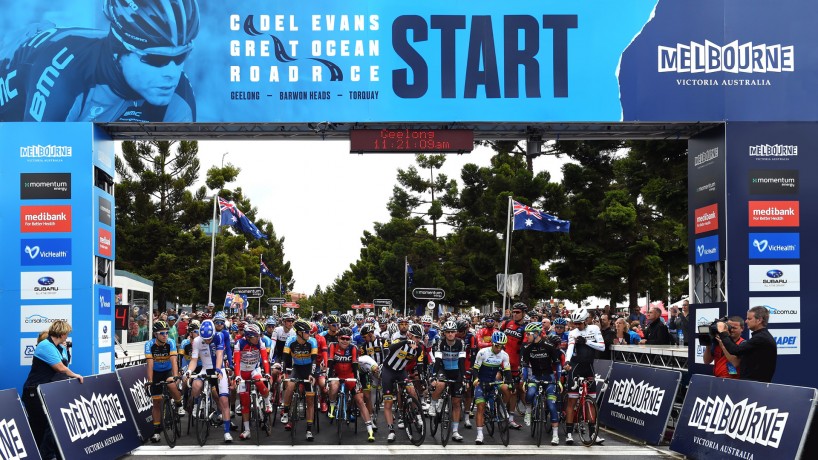
cadel evans great ocean road race visual identity on the start gantry
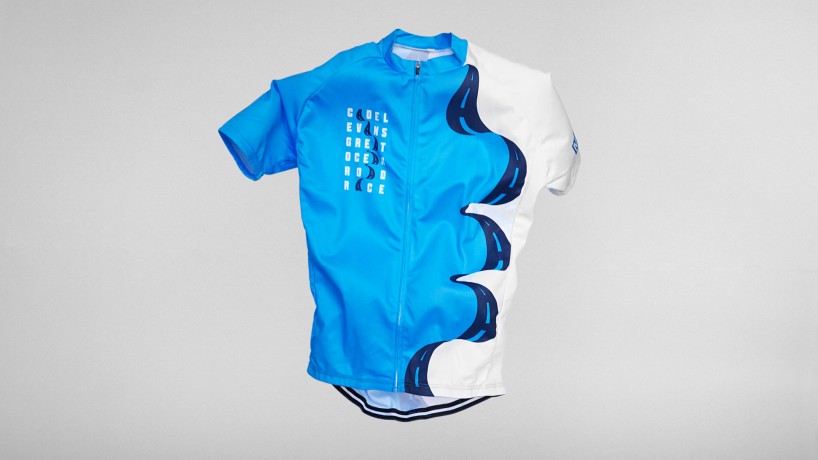
cadel evans great ocean road race jersey
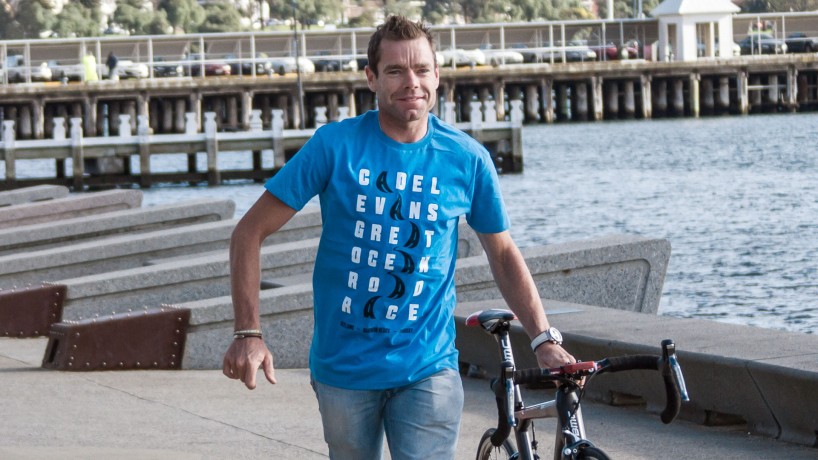
cadel evans t-shirt
DB: how would you describe your approach to design?
JS: we’re quite process-driven in the way we approach new projects. research, strategy and a brand idea are always worked through before we even think about design. we’re also very democratic involving everyone in the studio, especially during conceptual work. once we settle on a brand idea, the rest of the work is about refinement and extension of that idea.
DB: who or what has been the biggest single influence on your way of thinking?
PM: we can’t single out any one influence. we believe that we’re largely a result of all the people we meet and work with. when we set up self-titled we drew upon all the great things from everywhere else we had worked and implemented some of those ways of working and mindsets. we were equally conscious about avoiding the things that weren’t so great about previous employers.
our views on graphic design are pretty fluid and constantly challenged as the industry evolves. the edges are blurred and that’s probably where we take inspiration, in the overlap with other forms of art and culture.
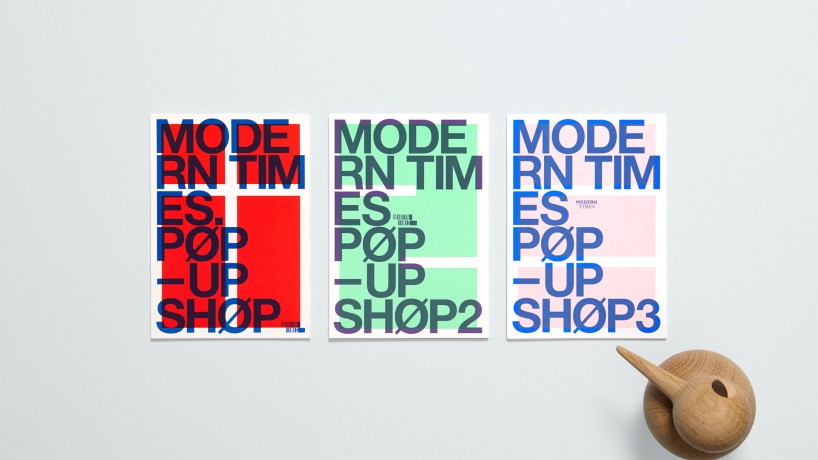
modern times pop-up shop post cards
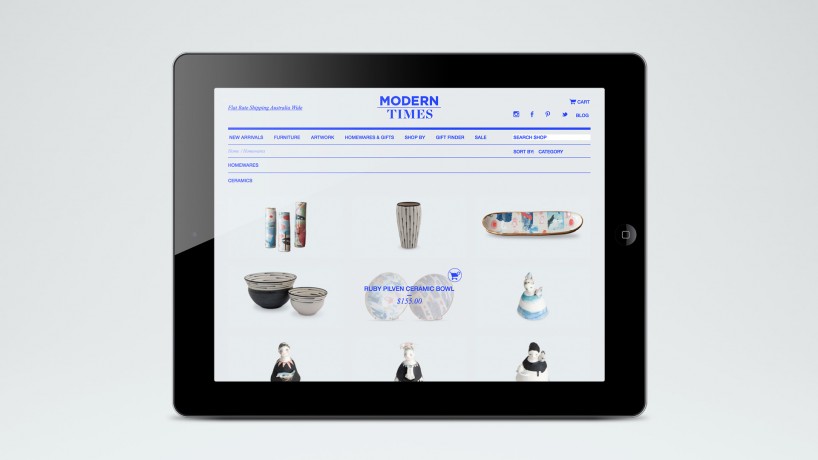
modern times online shop
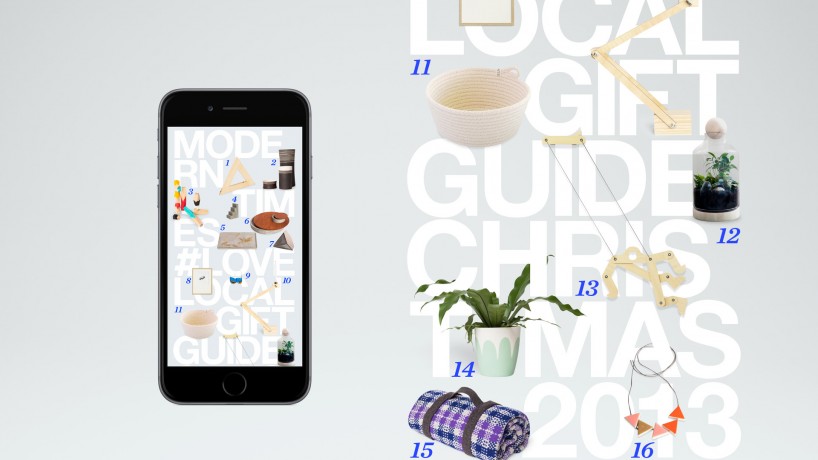
modern times christmas gift guide
DB: what would you say is your strongest skill and how have you honed that skill over the years?
JS: I think we’re good at taking a complex brief and finding the simple solution in it. the ability to reach appropriate solutions more efficiently and with greater clarity of concept. working closely with good strategic thinkers has helped in this regard.
we’re also good at approaching, or at least considering, our work from our clients point of view. understanding what’s the real goal behind a project, what’s the business issue and even if the project itself is the right solution to the business issue. not sure if it’s something we’ve honed, but these are the discussions you can’t have without experience.
DB: what type of brief or project do you enjoy working on the most and why?
JS: we love opportunities to create or shift a brand, and through it, a business. projects where the client trusts and enjoys the ride you are taking them on. otherwise we’re purposely sector agnostic. we really enjoying working in sectors were where design hasn’t previously played a significant role. these are the sectors where it’s easier to make a big impact. while it’s nice to produce a great piece of design for a fashion client, it’s kind of expected. there’s a benchmark already there.
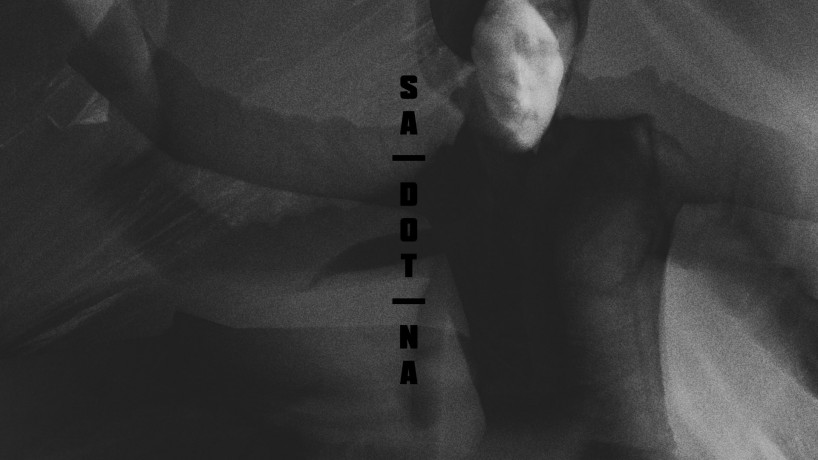
sa dot na visual identity (photograph by justin ridler)
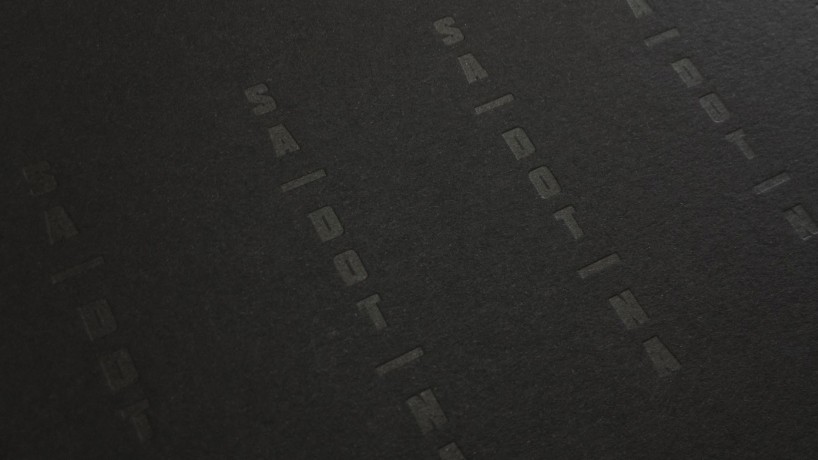
sa dot na visual identity
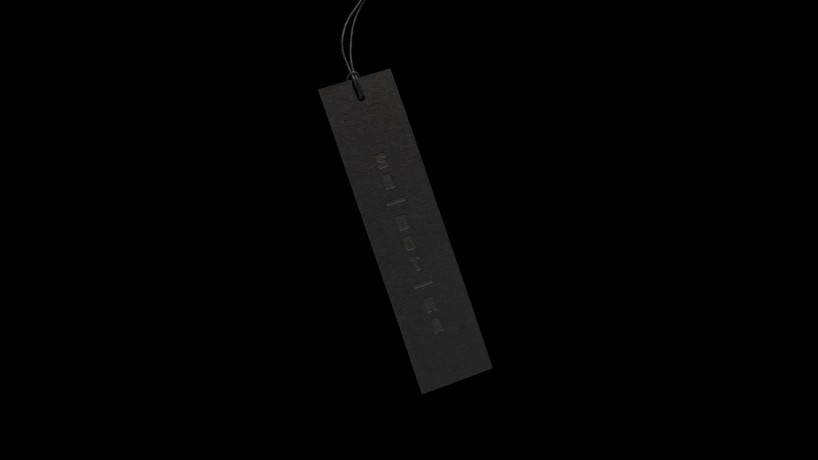
sa dot na visual identity swing tag
DB: what do you enjoy the most about creating visual identities?
PM: the possibility at the start of a new project is extremely exciting. when there’s an appetite for something new and you are only limited by your imagination. then there’s a lot of hard work, and hopefully it’s also really enjoyable at the end, when you can take a step back and see what you’ve created.
the opportunity to immerse yourself in a sector you previously had little understanding of is also really enjoyable. working across lots of business sizes and types keeps things fresh and interesting.
DB: what common mistakes or traps should one be conscious of when creating a new visual identity?
JS: the driving core idea needs to be both exceptionally strong and unique before the expression can be really informed, aesthetics are a given, but they have to follow the idea. one of the biggest traps both client and designer can fall into is thinking that once a brand identity project has been signed off, it’s finished. it takes a lot more work to launch the brand successfully and then to ensure it evolves over time. for that reason, we create fairly simple brand guidelines to allow for freedom of expression, evolution and growth over time.
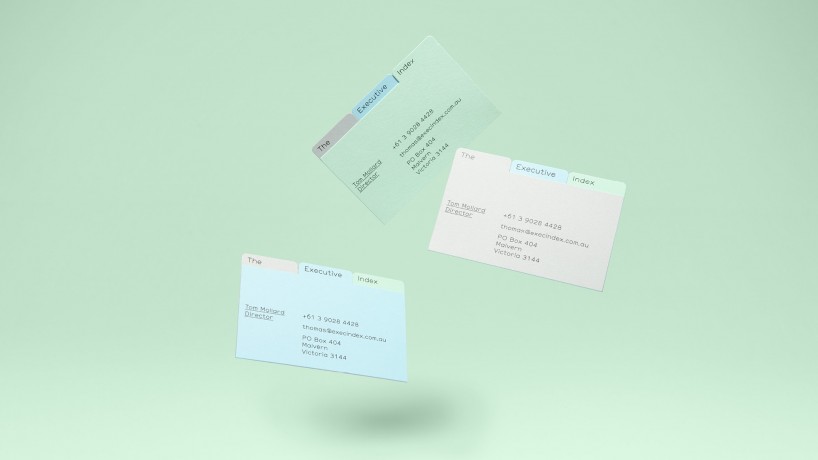
the executive index business cards
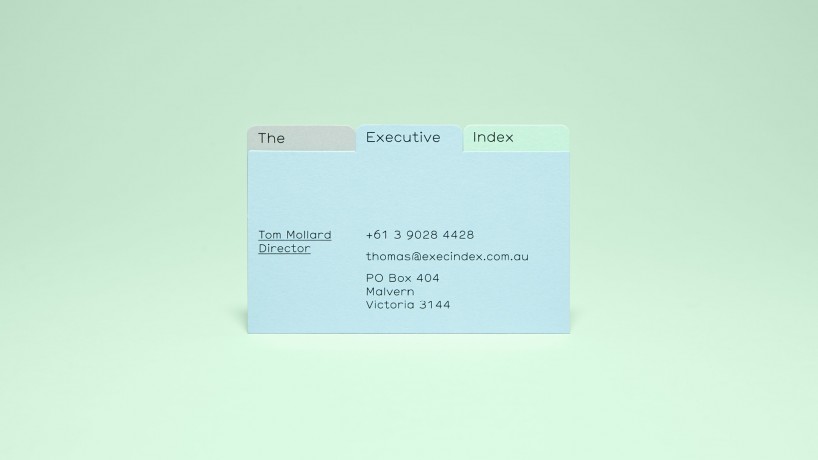
the executive index business card
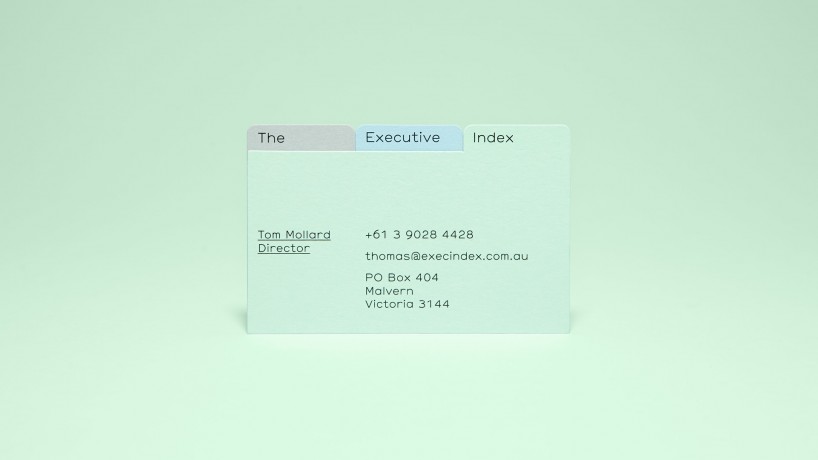
the executive index business card
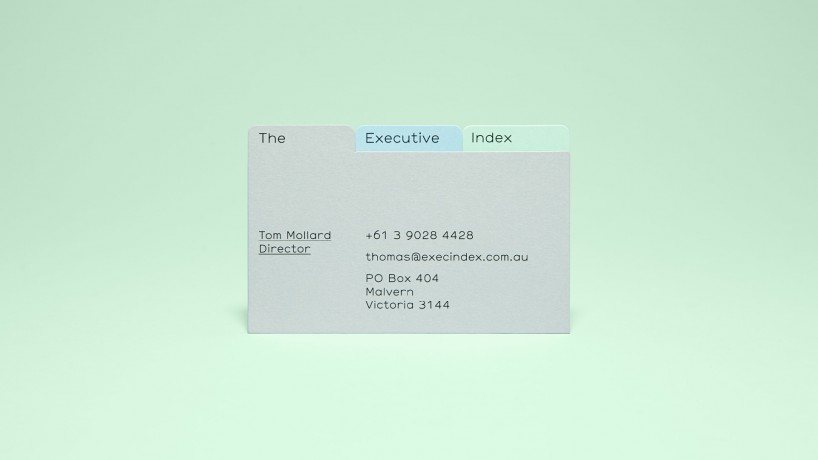
the executive index business card
DB: how do you think online design resources have influenced the graphic design being produced today
PM: online design resources have had a massive influence, not only on how design is produced but also how it is consumed and how it is valued. on the positive side, clients are now better educated and even mid-sized businesses realise the importance of brand and design for business. the bar has been raised in terms of quality and access to work from all over the world. on the negative side, that work from all over the world is looking more and more the same. the previously defined national design expressions of countries such as switzerland, japan, italy and the uk are now blurring into a global expression.
DB: what are you currently fascinated by and how is it feeding into your work?
JS: both having daughters under 1 year old, they are endlessly fascinating. watching them develop, interact and communicate is an amazing experience. it’s feeding into our work by making us more time aware. making decisions faster and really being conscious about where to spend more time on a project and where it’s already finished.
DB: what’s the best piece of advice you have heard and repeat to others?
JS: when it comes to a project, don’t limit your expectations to that of your client, the sector or the current state of the brand.
graphic studio interviews (193)
PRODUCT LIBRARY
a diverse digital database that acts as a valuable guide in gaining insight and information about a product directly from the manufacturer, and serves as a rich reference point in developing a project or scheme.
